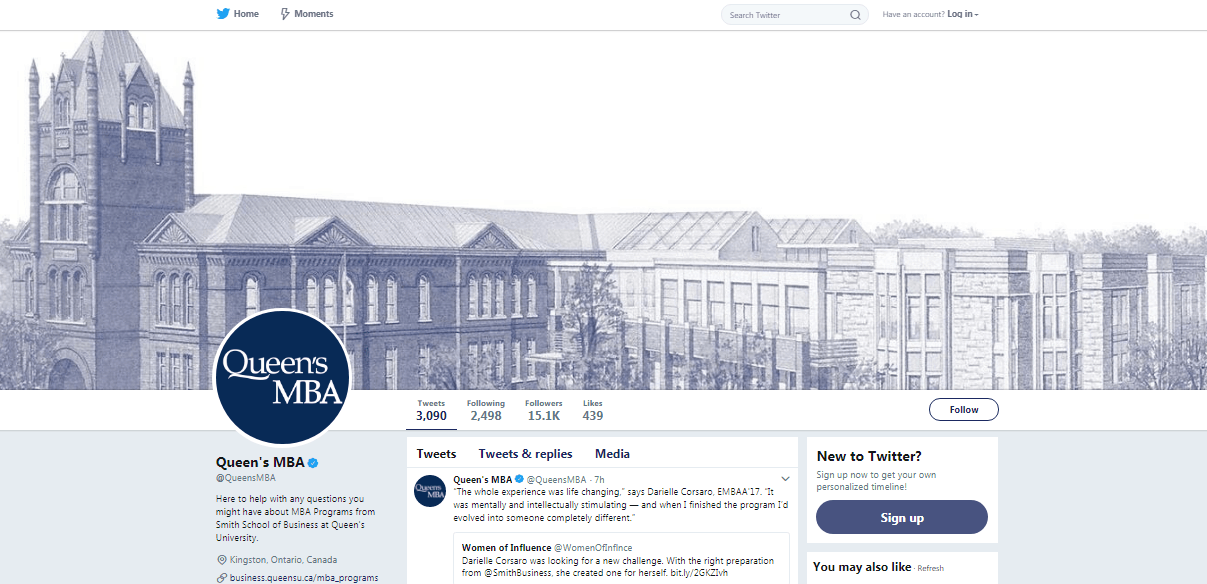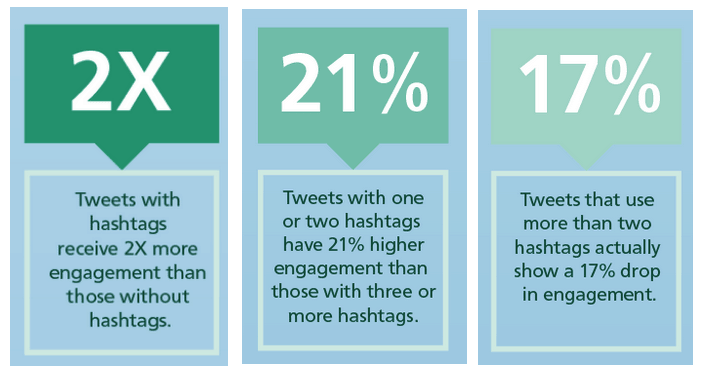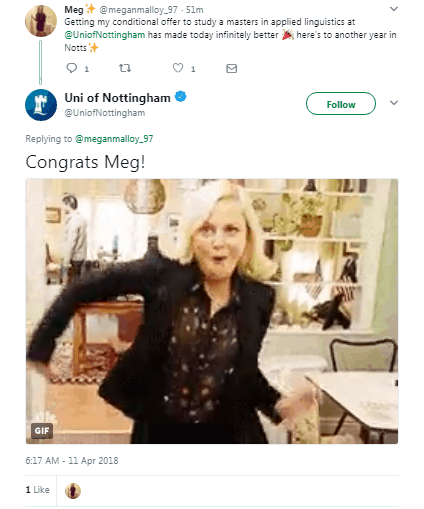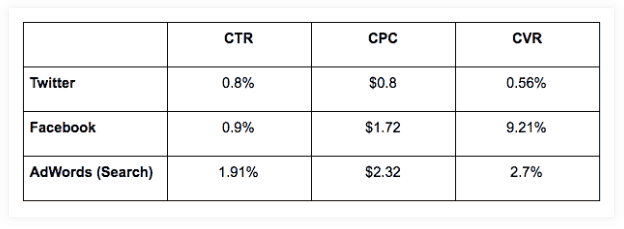In 2013, just three years after its launch, Instagram had 100 million users. That same year, Twitter had 241 million users, having been around for seven. As of 2024, Instagram has 2 billion monthly active users compared to Twitter’s 368 million. With these numbers in mind, you may be tempted to reconsider how to use Twitter for college recruiting.
Other social media sites, like Snapchat and Reddit, have also enjoyed massive growth during this time, while Twitter has largely stood still. As a result, the platform has developed a reputation among some market observers as a perennial underachiever and also-ran, at risk of being left behind as the digital world matures.
Given its changing position in the social media landscape, what role should Twitter play in social media recruiting efforts undertaken by schools, both now and in the future?
Here’s our assessment of Twitter’s potential to offer value for student recruitment and student engagement on Twitter.

Are Your Prospects on Twitter? A Demographic Analysis of How to Use Twitter for College Recruiting
While Twitter’s growth has slowed in recent years, it’s worth noting that the site still commands a loyal following among long-time users. What’s more, the Twitter audience is diverse and multinational and encompasses people from many potentially important student recruitment markets.
Crucially for schools, Twitter is most popular among younger audiences. Most experts estimate that around 40 percent of the site’s users are aged between 18 and 29, while the site characterizes up to 80 percent of its users as ‘affluent millennials’.
Example: Queen’s MBA, a dedicated account for the MBA programs at the Smith Business School at Queen’s University, has over 15,000 followers. The audience for this type of program is strongly correlated with Twitter’s core user base, demonstrating the potential value of the platform in certain markets.

The social media giant is also keen to point to its users’ high levels of engagement, estimating that they are 9 percent more attentive and responsive and 10 percent more trusting than users of other social platforms. Twitter also states that the number one reason people visit the site is to “discover something new and interesting.” This kind of young, engaged, brand-friendly audience is one of the principle reasons that attempting to recruit students on Twitter could be worthwhile.
The site also remains very popular in the US. This means that maintaining a presence on the site could be particularly important for US schools, especially those wondering how to use Twitter for college recruiting.
Example: The University of Colorado Boulder has over 74,000 Twitter followers, around 20,000 more than on Instagram. While its following on the latter is still strong, this disparity demonstrates why schools should look beyond the basic user statistics when considering the value of Twitter.
Here’s a snapshot of Twitter users by country:

From this, you can see that there is huge potential for using Twitter as an engagement tool in key international student recruitment markets such as India, Indonesia, and Brazil. Schools focused on domestic recruitment in the UK and Canada would also be mindful of Twitter’s potential reach, with over 20 percent of the population in both countries active on the site.
Twitter as a Tool for Reaching Prospective & Current Students
One of the most popular uses of Twitter by educational institutions is as a channel for delivering content. It’s common practice to share links to web and blog pages, post native or shared photos and videos, and link to other forms of content that might be created in the course of an ongoing digital marketing campaign. Other native content can be posted to the site, including quick public messages, audience polls, and more.
None of this stands out relative to what is possible on other social networks. Twitter’s advantage for this type of activity is rather in the way the platform incorporates the use of hashtags, which categorize content for other users to discover, and user tagging. Other social networks offer hashtags, too, but Twitter posts appear to enjoy a particular advantage from including these tags due to their frequent and popular use.
Here’s a quick look at Buffer’s findings regarding hashtag usage on Twitter:

It helps that hashtag selection is a simple process. Generally, it’s as easy as thinking of a hashtag that seems appropriate to the post’s subject matter and then checking its relevance and popularity by using Twitter’s search function to see how it is being used. At this stage, it’s good to look at the other content that appears in the search for that hashtag and see if your content fits well with what you see. You might also check and see what your competitors are doing and use some of the hashtags they are incorporating in their tweets, or even start your hashtag that leverages the strength of your institution’s brand.
Example: The University of Alabama’s rallying cry of “Roll tide!” is very popular as a Twitter hashtag, connecting the school with users around the world.

This means a greater volume of Tweets should be published to approach the same level of effectiveness seen on other platforms. Still, it also means that sharing the same content multiple times, even on the same day, is very appropriate. For instance, creating three different messages to share a blog post and then publishing them at different times over the course of a day could help ensure your audience sees your content. Since only a few of your followers will see each tweet, you don’t have to worry about overwhelming them.
To really achieve great results on the platform, however, audience engagement is the key. Unsatisfied with his Twitter results, David Cuevas of Intouch Marketing conducted an experiment in which, in addition to his regular twice-daily Twitter posting, he made an active effort to engage with other users for a month. This meant reading other users’ content, retweeting and liking the most interesting content he read, replying to retweets, mentions, and direct messages, and generally attempting to engage in real interaction with others. As a result of the experiment, virtually all metrics went up, but this approach’s effect on his impressions was the real standout. Here are the “before” and “after” results.
Given the short lifespan of Twitter content, the fact that this active and interactive use appears to get better results is not surprising. Schools, in particular, might even stand to gain more by taking advantage of this, as many prospective students want their institution to be attentive and to provide a sense of community. A proactive and engaging Twitter presence could be a good way to demonstrate both.
Example: The University of Nottingham has a very active Twitter presence and regularly retweets and replies to other users. The hard work pays off; the school has over 75,000 followers, and its posts have attracted over 28,000 likes.

The obvious issue with this is that it takes a fair amount of time to do this kind of active social networking correctly, and your recruitment team may not be able to afford to devote 30 minutes a day solely to interacting with Twitter users. Even if you do, that time might be better spent on a platform with higher traffic, such as Facebook or Instagram. Ultimately, the resources and effort you devote to the platform will depend largely on your target audience and how likely they are to be active on the site. Reviewing these factors can help you decide how beneficial your social marketing efforts will be as you consider how to use twitter for college recruiting.
Twitter as a Tool for Education Advertising
Like many social media platforms, Twitter offers a number of advertising opportunities for brands and institutions to take advantage of.
There are two main ad types available for self-serve advertisements on Twitter:
- Promoted tweets: These look and behave like regular tweets but will appear in the timelines of users who do not follow the poster. The cost is per engagement (retweet, like, share, etc.).
- Promoted accounts: Puts an account in the recommended category for users who do not follow that account.
Additionally, an ad format called “promoted trends” allows advertisers to create an entry for placement in the “trends” category. This can be a good way to gain visibility, but the format can be incredibly expensive—sometimes costing $200,000 or more—so it’s not a viable solution for most schools.
Different ad formats can be used together in a single Twitter Ad Campaign, which can be built around a number of goals.

Twitter also allows advertisers to add targeting parameters to ensure their ads reach the right people, and schools can target subsections of the Twitter population based on filtering for interest, language, gender, and behavior.
Twitter also has one rather unique targeting option: target individuals on the social network based on a demonstrated interest in a TV show, network, or favourite television genre. Ads can be delivered before, during, and after a broadcast. Since many users stay online while watching their favourite shows, this targeting could provide an interesting opportunity to appeal to them with ads that link programming they love with potential schooling opportunities. For schools willing to be a little creative with their advertising, there’s an interesting opportunity available with this type of targeting that you won’t find with other platforms.
There is conflicting evidence about how effective Twitter ads are in generating results. For its part, the site itself offers four studies that it claims demonstrate that “the average Twitter Ads ROI is 40% higher than the average media ROI for other channels.”
That said, a comparative test performed by Single Grain, which pitted Twitter against Facebook and AdWords advertising, found that the platform performed the worst for both click-through and conversion rates.

Nonetheless, the study did find that the cost per click was a fair bit lower on Twitter than on other channels, suggesting there is value to be found in the platform, although it might be best to use it to supplement ongoing campaigns on other channels, rather than as a primary focus for your initiatives.
Interested in working with us to develop your social media strategy? Our team can help you discover how to use Twitter for college recruiting.
Attracting Students to Your Twitter Account Through Organic Search
Another good way to increase traffic and engagement if you’re wondering how to use Twitter for college recruiting is through organic search. Tweets from notable accounts can appear quite prominently in Google searches, where they are often featured in a special card that allows users to click back through text-only versions of the five latest tweets related to their search terms.
Example: Searching for “University of Minnesota” pulls up the school’s latest tweets, displaying them in a card near the top of the organic search results.

This prominent site positioning in Google searches is unique to Twitter and could be a valuable driver of engagement. However, it’s important to note that it is not a given that a school’s Tweets will appear in Google searches. Large universities tend to see this benefit, but private colleges, language schools, and even smaller universities may not.
However, you may be able to improve your odds by optimizing your Twitter presence. This means uploading high-resolution photos to your profile, sharing your Twitter profile’s URL across other social media pages, submitting your school’s Twitter information to registries like Twitaholic, and adding social markup data that tells Google to link a Twitter account with your institution’s website.
Example: McGill University has used markup to associate social media accounts with its school. With Twitter, this may help you get a Twitter card to appear in search results and provide links in Google listings for your institution.
Evaluating the Benefits When Considering How to Use Twitter for College Recruiting
While Twitter may have been overtaken by other sites in recent years, it remains one of the largest social media platforms in the world today. Maintaining a presence on the site is still important for schools looking to gain traction in several markets. While achieving great results with Twitter can be challenging, it enjoys a status of “too big to ignore” for any institution that wants to ensure the best odds of reaching a wide base of prospects.
However, it can take quite a bit of active outreach to make Twitter an effective tool for building your online community, and schools should carefully evaluate their resources and target audience before deciding how big a priority the platform should be in their campaigns.
How valuable is Twitter for student recruitment? The fairest answer is “somewhat.” Although it should probably not be the primary focus of your institution’s efforts for outreach, content marketing, or advertising, it can nonetheless be an essential part of a comprehensive, multichannel social media marketing strategy.

FAQ To Consider
How is Twitter used for recruitment?
Twitter offers a number of advertising opportunities for brands and institutions to take advantage of. There are two main ad types available for self-serve advertisements on Twitter: Promoted tweets and Promoted accounts.






